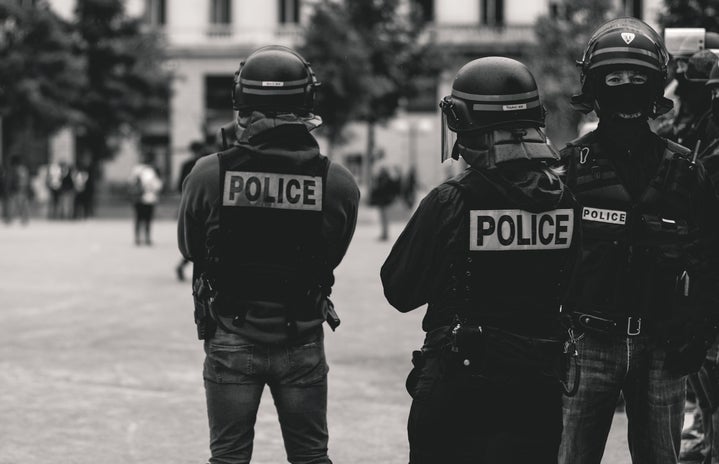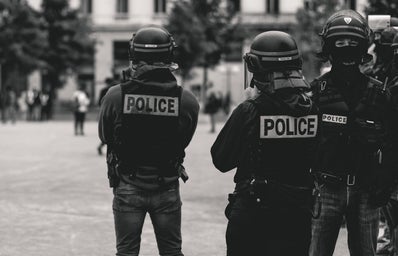The article below was written by Catarina Nestlehner and edited by Lethícia Lioi. Liked this type of content? Check out Her Campus Cásper Líbero for more!
Astroworld Festival ended in tragedy on November 5th, in Houston, Texas, when 10 people died and several were hospitalized during Travis’ concert.
“The crowd began to compress towards the front of the stage, and that caused some panic, and it started causing some injuries, people began to fall out, become unconscious” explained Samuel Peña, Houston Fire Department Chief. When the concert started, there were around 50,000 people in the crowd.
The sold-out Astroworld Festival happened at NRG Park and was expected by a lot of people for a long time since the flexibilization of Covid-19 restrictions. The excitement has been shown since the purchase of the tickets (which cost $380 or more) months earlier. As part of this enthusiasm, people lined up way before the concert, at 3 a.m – all of them experienced the scene of the crowd rushing towards the stage.
According to Sylvester Turner, Houston Mayor, the fatal victims were between 9 and 27 years old. The youngest of them, Ezra Blount, died of cardiac arrest. More than 300 people were injured and among many hospitalized, at least five were underage.
Although Scott paused the music multiple times after spotting fans who needed medical attention, the rapper finished the concert. After it came to an end, he headed to Dave & Buster’s for an after-party hosted by Drake, who performed in the concert as a surprise guest. According to Scott’s lawyer, the singer was unaware of the mass casualty declaration until the following morning, even though videos of that night show him trying to understand what were all the ambulances doing in the surroundings. Now, he is facing lawsuits (such as Live Nation Entertainment Inc., Apple Inc.) for failing to implement proper security and emergency response measures.
How could it have been avoided?
Signs of trouble were evident hours before the disaster, according to Houston Fire Department logs. Officials and concert organizers were already concerned about the crowd’s energy even before the concert began, which included very devoted fans. People were so excited, they rushed forward: “They were not walking. They ran in”, said Dupri Johnson, who works at the NRG Park. “It just seemed a little chaotic”.
Shortly before 5 p.m, the Houston Police Department reported “dangerous crowd conditions” at one stage. Then, eight minutes before Travis Scott, headliner and festival organizer, entered the stage at 9 p.m., more than 260 people had already been treated, according to the logs — which did not specify the type of treatment. A 9:18 p.m. entry noted a “crush injury.”
Police reported “multiple people trampled and passed out at front of stage” at 9:33 p.m. Minutes later, a police operator reported five 911 calls about “unconscious people in the crowd. Report of possible CPR (cardiopulmonary resuscitation).”
At least more than eight breaches would be reported throughout the day, with 3,000 to 5,000 people that were “not scanned” entering the venue by 5:05 pm, according to the logs. Ambulances transported many injured fans to the hospital that morning and afternoon.
Investigators are still looking into the timing of events, including what producers knew about fans’ serious injuries before the decision to end the concert at 10 pm. The performance ended 30 minutes earlier than scheduled, but nearly 40 minutes after a “mass casualty event” had been declared by city officials. The worst happened from 10 pm to 11:40 pm, when 17 people were transported to hospitals – at least six of them in cardiac arrest. Fire Chief Samuel Peña explained that the singer and the organizers could have stepped in and paused the show.
“The one person who can really call for and get a tactical pause when something goes wrong is that performer. They have that bully pulpit and they have a responsibility,” Chief Peña said in an interview to The New York Times. “If somebody would have said, ‘Hey, shut this thing down and turn on the lights until this thing gets corrected’ — and that coming from the person with the mic — I think it could have been very helpful.”
Amper, one of the fans who went to the concert, said she’s been to the two previous Astroworld events and it’s not unusual for a crowd to “rage” when Scott appears. So, being prepared for the rush of fans that usually occurs at the concerts could have avoided the disaster – or to be strict on the concert’s capacity, which was certainly something that made a huge difference when the crowd started to be compressed against each other and the stage.
Investigators are also examining the possibility of drug overdoses at the Houston concert involving counterfeit pills laced with fentanyl. “We’ve heard about that. There is evidence that there were drugs involved but I don’t know exactly what they were. All that is going to be fleshed out after the investigation”, Peña affirmed. The Fire Chief also said the Houston Fire Department administered a large amount of NARCAN, which is the medication used to counter an opioid overdose.
“Just because we administered lots of NARCAN doesn’t mean that overdoses were prevalent. That is a medication that we administer when someone is unconscious and we don’t know what the genesis of that situation is so we give it to try to rule things out”, Peña declares. It’s unclear exactly how many doses of NARCAN were administered to unconscious patients. The police Chief Troy Finner said police were looking into rumors of a drug spiking incident involving a security guard at the festival. But, afterward the Chief clarified that the guard was actually hit on the head.
Travis Scott declared he would cover funeral costs related to the tragedy and asked stampede victims to “contact him” for financial aid. He is also offering mental health support to all related to the disaster. He partnered with an online counseling platform called BetterHelp to make the free therapy service possible.


